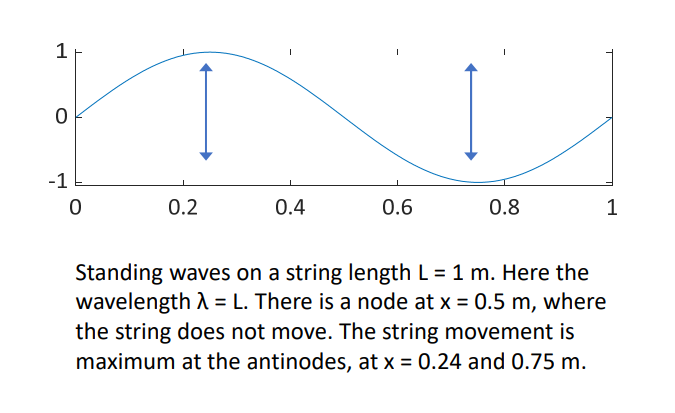PX154 - H3 - standing waves and normal modes
introduction
- a wave perfectly reflecting from a fixed end. now, the other end is fixed too
- for sinusoidal waves:
- using trig identity:
-
- when

-
points with no vibration are nodes
-
points with maximum/minimum vibrations are antinodes
-
comments: for a standing wave there is no transfer of power
modes
- a string of length,
, fixed at , and - we can only have waves if
- fundamental:

- first harmonic:

- second harmonic:

- third harmonic:

- more in [YF fig 40.11]
- power in the wave:
- the higher modes are more energetic
- the wavelengths, frequencies, and energies are quantized
- if a note is played on a piano, the fundamental and combinations of harmonics is produced - requires [fourier analysis]
waves in open pipes
[YF 16.4]
- check this
- for a both-ends-open pipe, the density and pressure of air at the ends are fixed by the room conditions.
- density and pressure at the ends of the pipe remain constant, which gives the boundary condition
- standing waves are obtained